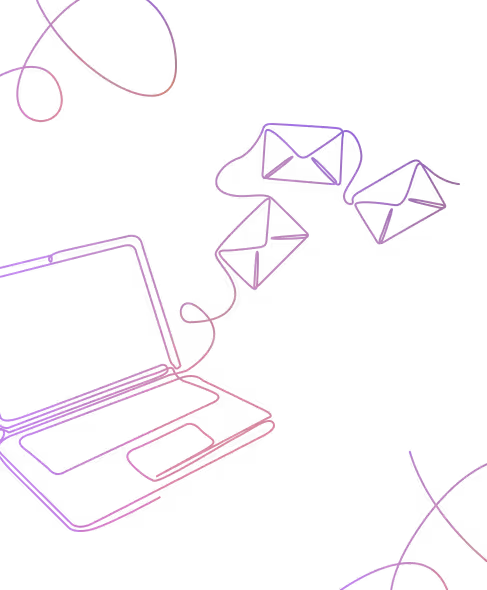Keep good posture. Smile. Have a firm handshake. Use power poses. Be open to feedback. Act confident.
You have read or heard all of this. You remember all of this. Yet when you go into the meeting room, a sudden wave of nervousness comes over you. You see some people - some expectant, some distracted, and some disinterested. You start. But it’s not a great start. You show the wrong slide first, you frantically search for the right one, you can already see people losing interest, you can’t stop using filler words like ‘uh’ and ‘umm’ - you know it’s a disaster! You talk anyway. You’re so nervous that when you see someone about to ask questions, you quickly move on to the next topic because you fear being interrupted.
The presentation is done.
People now ask irrelevant questions. They probably did not understand what you were trying to convey, that’s what makes their questions irrelevant. They do not ask about what you just presented. Some people just ask for the sake of contributing to the meeting. Some ask the same question they have been asking for the last 3 meetings. You answer some, ignore some and call it a day.
Everyone leaves the meeting room, somewhat disoriented and unsure of whether they just made progress or not. Nobody fully understood what was going on and hence could not contribute or even feel like they were working towards the same goal.
And when you present your work, you feel like you have not done your job properly. But you do not realise that it wasn’t your filler words or the slouched posture or even your presentation or designs that were the problem (they were all fine), it was the expectations you had from the presentations. And that’s just a perspective that you can easily change for the better!
The General Rules
Be Detached
Designers present a lot. If it is not well received, it might be a little disheartening. You might even think ‘Me, a designer, who makes designs for a living, showed them a design, and they did not appreciate it?’ People tend to have 2 kinds of responses to this:
1. How could they?
or
2. Am I even made for this field?
This approach is diminishing. Not only for our self-confidence but also for your design process. If a designer just makes designs and does not ask for feedback or does not make changes according to the feedback, there’s something wrong with the process.
As designers, our job is to listen. But do not listen for the validation. Have detachment from your project. Do not hold on to the idea that your design has to be appreciated. Have your design’s best in mind, and wish well for it. Listen as you would to your therapist talking about parenting for your child - you just wish the best for your child (in this case, your design) and so you’re listening to see how you can better parent your child (or better your design), not to validate whether you are already a good parent or not (in this case, a good designer or not).
And how do we listen? Through PRESENTATIONS. That’s right - your presentations are less about you talking and more about you gaining valuable insight from people who are present there. This helps you look at different perspectives, ideas, and expertise of people from different fields.
Speaking of people from different fields, when product owners, stakeholders, subject matter experts, and developers sit in a meeting room to listen to your presentation, giving feedback and suggestions then is their only chance to contribute to your designs. Their contribution is valuable for you too. It will help you make better designs. But they have other jobs to do, so this is also your only chance to listen to what they have to say.
So use your presentation to really listen and act on their feedback. And to listen to this feedback, be detached from your designs.
Start Early
To have successful presentations, you need to start presenting from a very early stage. Have all stakeholders involved throughout. Let everyone contribute from the beginning. Don’t worry if your progress is ‘too little to present’ just schedule regular meetings and keep having open discussions. Make the process interactive from the very start to avoid misunderstandings, align your goals with your stakeholders and keep everyone on the same page from the start.
This way, when something unexpected happens and major changes are asked of you, you can go over the previous designs, show what feedback you received and show what decisions were made by the whole group - designers and non-designers. You can also have the whole team support your decisions.
Your case becomes strong, socially validated, and with minimal error.
The Presentation Itself
The Audience
Why are you presenting? Who is listening and why? Find answers to these questions. Find out who all will be attending and why. Is it a fairly informal call about your progress with the people you know? Is it a formal call with stakeholders and team members you don’t frequently meet? Who is attending? What could they ask? Find answers to all of these questions.
Will Neel from development ask about that element that doesn’t scale well for mobile? Will Anya from marketing ask about the home page that is great for users but not so much for marketing? Does your Project manager ask you the same question every time? Why? What are their roles in this project and what could they ask? Could I address these issues before they even ask so their doubts are cleared? In case they ask, what will I say? How will I react?
Since presentations are for you to listen to, find out who you will be listening to. Do thorough audience research and be well prepared. Play these scenarios in your head. Understand why people will be listening to your presentation and give them what they want. Don’t focus on the screens you designed if your audience is more interested in how your design solves a business solution, for example. Focus on what matters to them.
Just as you prepared before the meeting, you need to prepare your audience too. Tell them what the scope of the meeting is and what to expect from you. Tell them that when you ask for their feedback, you want certain questions (maybe make a questionnaire) answered from them based on their individual expertise and interests. Give them a job to do. This way, they know what to look for and what insight to provide that will help you best. This will also prevent them from saying something for the sake of contributing.
This will help you not only listen better but also listen to the right things you require for your design. Not to mention, your audience will feel like their feedback was helpful, heard, and valued.
The Presentation
When starting with the presentation, again, reiterate the scope of the meeting. Tell them what to expect.
Start by talking about the outcome i.e. the latest conclusion that you have reached. Explain both, the business problem and the user problem you are trying to solve.
If you show previous designs and explain why you rejected them before coming to the final design, people will just hear ‘this is how many times I changed my mind and this is how hard it was. If someone in your audience has questions about alternatives to your design, you can go back and reiterate previous designs. This will also be an effective way to talk about rejected designs, as it’s being shown as an answer to a question, not a part of your presentation.
And don’t worry, this does not diminish your value as a designer as long as you provide a viable solution for your problem. Your value lies in a good solution, not in the number of alternatives you rejected.
If possible, try showing a persona with a name and a back story and how to show how this persona performs certain actions with your design. Present it like a story to make it interesting. In the end, you could address the concerns, business goals, or user research findings you couldn’t address during this user journey.
This way, your presentation becomes an engaging story that’s easy to remember and it puts the user at the centre of your solution. The feedback you get tends to be more focused on the user and the solution being discussed rather than the nitty-gritty details of each screen.
Lastly, as soon as this presentation is done, think of the next one. How much time is there until then? What outcomes do I expect from it, as compared to the one I just finished? How do I direct my work accordingly? If I have to implement decisions and changes from the feedback I just got but there isn’t enough time until the next presentation, what do I need to prioritise? Answer all these questions and carry on with your work with intention and mindfulness.
The Feedback
Even when the time for feedback comes, remind people again about the scope of the presentation and their assigned jobs of giving specific feedback based on their skills and expertise. Tell them what the main focus of the presentation was. Ask Neel from development whether he thinks that the differences in design between desktop and mobile are easy to implement. Ask Anya from marketing about whether she thinks the changes made specifically with marketing problems in mind will be effective solutions. Ask general things like what each person most looks forward to if is there something that is a potential problem or if there was something else that people expected to be covered in the presentation. You could also ask for examples to support the feedback - ask Neel which feature exactly would be a problem and why or ask Anya which part of the solution she thinks would be the most effective and in which case.
Do not ask ‘Do you like it?’ or ‘What do you think about it?’. These questions invite undirected, complicated, not constructive, and sometimes unsolicited advice.
Letting people know that you will be taking questions, in the end, will also keep them from interrupting you during the presentation. In case they still do interrupt you, let them know that you will get back to their question in the end and then address their question later on.
Afterward, send every attendee a message explaining how their feedback was valuable to you and how, in case they come up with more feedback, they should reach out and let you know about it over a call, an email, or any other medium they are comfortable with. Oftentimes, people come up with valuable insight long after the meeting is over. Giving them a way to communicate it back to you is great for you and for them.
Where to go from here
Presenting design work can be stressful and hard, especially if there is a lack of preparation or clarity of motive in mind. However, you can ease the process by doing the following:
- plan for your audience
- show the outcome and not the whole process during your presentation
- present it in the form of a compelling story
- set up a feedback process
- teach everyone listening to give clear feedback based on their expertise
- make sure that you make decisions based on the feedback which you communicate back to all stakeholders
This process may take some time and practice to set up as well as get used to, but as soon as you get everyone involved in the flow, it will make your projects more efficient and easier than ever.
Enjoyed this article? Don't miss out on more exclusive insights and real-life digital product stories at LeadReads. Read by Top C Execs.
Join here.






